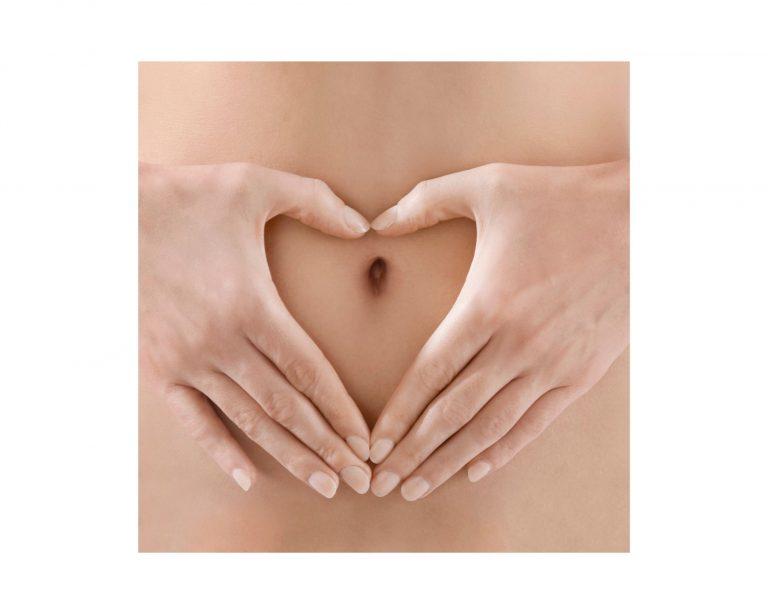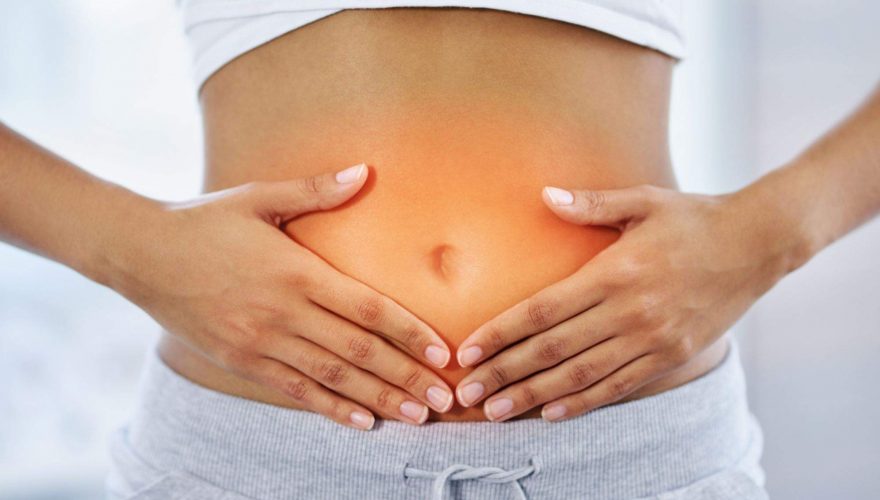All disease begins in the gut.
Hippocrates
How the digestive system works
The purpose of our gut is to take in food, digest it, absorb the nutrition into the body and eliminate waste.
Chewing and the stomach
The whole process begins in the mouth. The action of chewing not only mashes up the food, it also releases enzymes within the saliva which starts the breakdown of proteins. At this time, the level of acids in the stomach is raised. When the masticated food is swallowed it passes into the stomach, where most of the digestion takes place using stomach acids and enzymes. The result is a liquid called “chyme”, which is then passed to the small intestine.
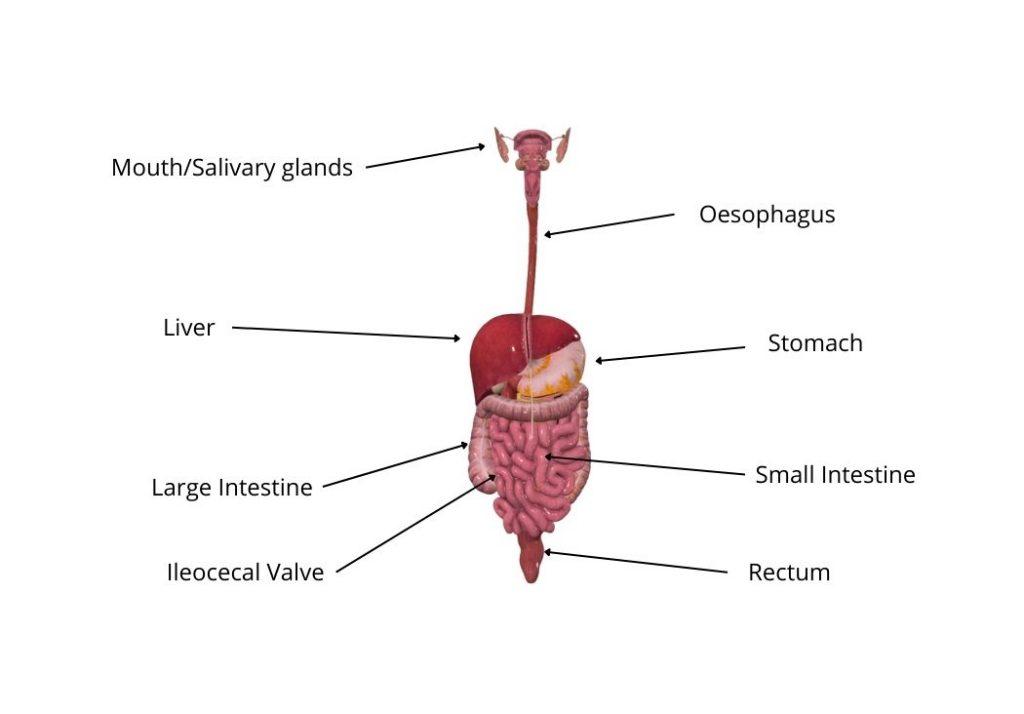
Small Intestine
The small intestine is where nutrients are absorbed through tight junctions in the lining, which is just one cell thick. This lining consists of many small finger-like projections known as villi, which increase the small intestine’s surface area, maximising absorption. Absorbed nutrients are passed into the hepatic portal vein to be directed to the liver, which will flush out toxins before passing the nutrients into the general bloodstream. The small intestine has three parts the Duodenum, Jejunum and Ileum.
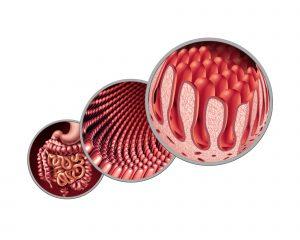
The Duodenum is the shortest part that collects chyme from the stomach, digestive enzymes from the pancreas, and bile from the liver. The enzymes break down proteins into amino acids and the bile emulsifies fats to be broken down into fatty acids.
The Jejenum churns the food with the digestive juices. Most of the nutrient absorption happens here: glucose from carbohydrates, amino acids from proteins and fatty acids from fats.
The food spends the longest time in the Ileum, which is responsible for completing nutrient and vitamin absorption. Once the nutrients are absorbed the remainder is waste material which is passed into the large intestine via the Ileocecal Valve (ICV).
Ileocecal Valve (ICV)
The function of the ICV is simple. It opens to allow waste material from the small intestine to pass into the large intestine. It should then fully close to ensure that toxic waste is not washed back into the small intestine.
Large Intestine and Microbiome
The large intestine absorbs water and salts back into the body, leaving the remaining faecal matter to be eliminated through bowel movements. The majority of gut bacteria – the microbiome – resides in the large intestine.
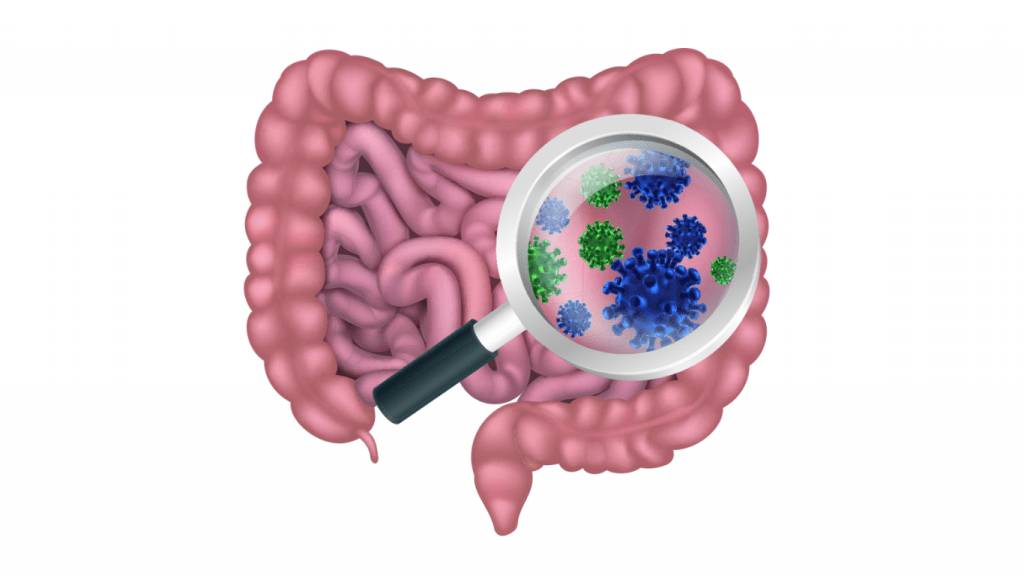
Interestingly, an estimated 90% of all the DNA in your body is not actually you. We are hosts to many organisms and bacteria that work with us symbiotically. In return for providing them with a home, they help us digest food, produce vitamins such as vitamin K (essential to support blood clotting), and protect us from pathogens. An average person carries approximately 2kg of microbiome in their gut alone. Scientists have recently found that the vagus nerve, which connects the brain to our gut, actually carries 80% of the communication from the gut to the brain. Our gut can influence our behaviour and should be regarded as our second brain.
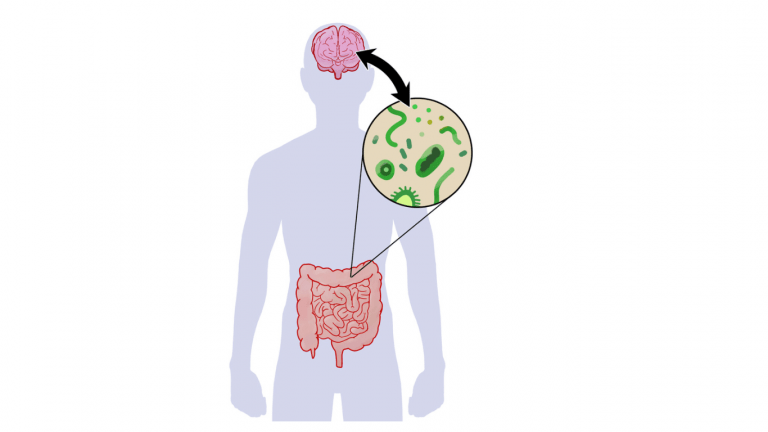
The composition of our microbiome is influenced by what we eat. If we eat food that is high in sugar, then that encourages the growth of bacteria that thrive on sugar. It is now believed that our gut bacteria can influence our desire for certain types of food, via the vagus nerve, which is one reason why people develop a sugar addiction.
What can go wrong?
Issues can develop throughout our digestive tract, which will have a detrimental impact on our health. I’ve included some of the more common complaints below.
The Stomach:
The most common complaint is due to the stomach’s acid levels. As we age, our stomach acid levels diminish, impacting our ability to digest proteins. This is one of the causes of gastric reflux or heartburn. At the entrance to the stomach, near the cardia, is a valve connecting the oesophagus to the stomach; this opens to allow swallowed food into the stomach. The production of normal levels of stomach acid sends a signal to this valve to stay closed. Low stomach acid will cause this valve to open, allowing the stomach’s contents to rise into the oesophagus, causing the burning sensation. This is often treated by antacids which further lower the stomach acid levels, providing temporary relief but not addressing the root of the problem. It is better to treat this condition by encouraging normal acid production through supplementation or other natural remedies, such as Apple Cider Vinegar. The stomach can produce too much acid, but this is rare. Once again, that can be treated with supplements such as Papaya Mint.
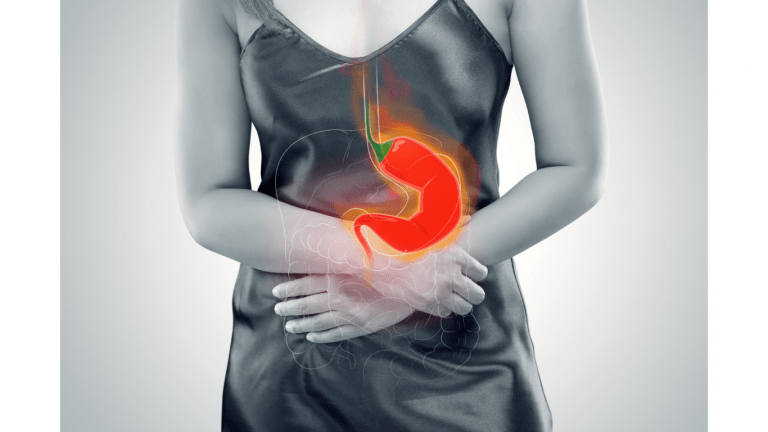
Other factors that can cause gastric reflux—are poor lifestyle choices such as junk food and smoking. Hiatal hernias and pharmaceutical drugs, such as NSAIDs, can also be a factor.
Helicobacter Pylori can also affect the stomach (and the Duodenum). This bacterial infection may impact stomach acid level production and damage the stomach lining, causing inflammation and irritation, which could result in ulcers.
The Small Intestine:
Unlike the large intestine, the small intestine normally has relatively little bacteria. Small Intestine Bacterial Overgrowth (SIBO) is a condition where there is excessive bacteria in the small intestine. The symptoms of this depend on the level of bacterial overgrowth but can range from bloating, discomfort after eating, diarrhoea to abdominal pain, weight loss and malnutrition. Other organisms, such as parasites and candida, can also impact the small intestine.
Another common condition is where the tight junctions of the intestinal lining are loosened, allowing larger, not fully-digested, food particles into the bloodstream. The body’s immune system does not recognise these particles, which will mount an immune response. This condition is known as leaky gut and can cause symptoms such as diarrhoea, constipation, fatigue, headaches, poor concentration, skin conditions and joint pain. Overconsumption of wheat is a big causal factor in developing leaky gut. Wheat is high in gluten, a plant protein classed as a lectin. Lectins are the plant’s defence mechanism and can “punch” larger holes in the gut lining.
The Ileocecal Valve (ICV):
Ileocecal Valve dysfunction is a condition where the valve is not opening or closing when required, allowing toxins to build up in the small intestine or flow back from the large intestine. The resulting toxins can cause a multitude of health issues, including abdominal pain, “grumbling appendix”, bad breath, bloating, chronic fatigue, colitis, constipation, diarrhoea, diverticulitis, frozen shoulder, bloating, hip and back pain, irritable bowel syndrome (IBS), joint pain, oedema, skin problems (eczema/psoriasis), migraines, heart palpitations and so on.
Microbiome Imbalance:
Our microbiome can be thrown out of balance through the overuse of antibiotics, a poor diet (particularly the overconsumption of sugar), stress, toxins and infections.
When our microbiome becomes imbalanced, it allows the “less-friendly” bacteria to take a foothold; this imbalance in the microbiome is known as “dysbiosis”.
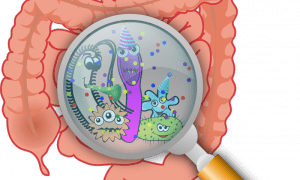
How Kinesiology Can Help
Almost every kinesiology session will involve looking at the health/balance of the gut. During a client’s first visit, I often find that the ICV is imbalanced. This is easy to test and easy to correct. Whilst correcting this imbalance, I will ask if the client is feeling any referral to other parts of the body. As I said earlier, an imbalanced ICV can cause problems throughout the body. If the client feels sensations or aches in other parts of the body whilst I’m balancing the ICV, this indicates that the ICV is behind that issue.
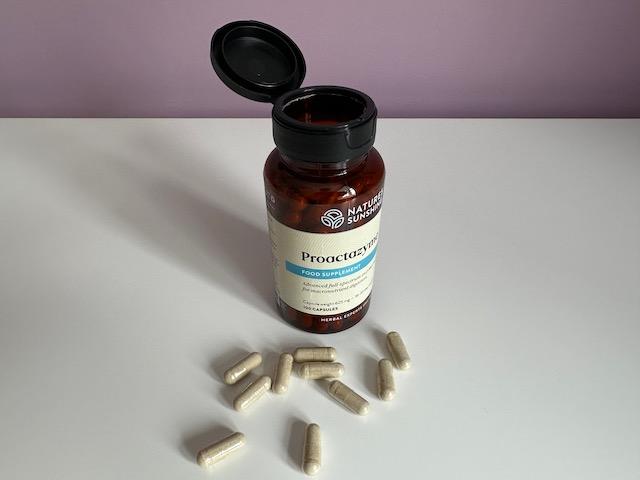
As we age, we will often benefit from a supplement that will aid our digestion. Most people over the age of 30 will benefit from a digestive aid. Using Kinesiology, this is easy to check and determine which supplement is most beneficial. This can range from enzymes to aid protein digestion to probiotics to restore gut microbiome balance.
Kinesiology can also determine what foods the client is currently sensitive to. These are typically foods such as wheat, sugar and cow’s milk. It can tell us whether the client would benefit from avoiding that food or limiting the intake to small quantities. When the gut is healed, then it is possible that the client can tolerate these foods again.
Imbalances of parasites and candida can also be detected through Kinesiology. It can also identify which supplements will be the most effective in eliminating these organisms; Black Walnut and Caprylic Acid are very effective at eliminating parasites and candida, respectively.
Kinesiology can also help gut inflammation and irritation issues, such as IBS, Crohns and Colitis, by detecting the foods responsible for the irritation (through food sensitivity testing) and finding supplements that aid the repair and soothing of the gut. Aloe Vera juice and Capsicum and Garlic are very effective supplements for soothing gut inflammation. As well as avoiding foods that irritate, the client is also advised to avoid consuming raw foods, such as salads, as the uncooked cell lining of the plant material is much harder to digest than cooked food.
The Gut Reset Programme
Every client’s needs differ, but typically, it takes around eight weeks to heal the gut. This is divided into two 4-week stages.
The first four weeks focus on elimination and clearing. The client is advised to avoid eating foods that are damaging to their gut whilst taking supplements that aid in clearing bad intestinal flora and toxins and restoring normal bowel movements. The next four weeks focus on repairing and re-populating. The gut lining is repaired by tightening the junctions in the gut lining and increasing the protective mucous membrane. Probiotics repopulate the gut with a healthy balance of beneficial gut bacteria.
Healthy Gut, Healthy Body
It is not possible to have a healthy body without a healthy gut. Gut problems can cause health issues throughout the body. Our modern lifestyles can be tough on our gut, from the foods we eat (especially processed/junk food) to high-stress levels. Our gut microbiome forms a huge part of our immune system; some say up to 80%. So, it is important to keep our gut in good working condition. Kinesiology takes the guesswork out of what is needed and can help restore the gut to a healthy balance and keep it there.
